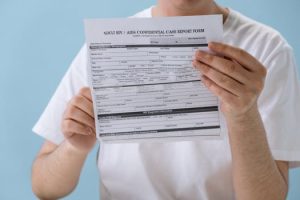First-time homebuyer programs expanding access
As the housing market continues to rebound, more and more individuals and families are looking to purchase their very first home. However, the process of becoming a homeowner can be daunting, especially for individuals with limited financial resources and no prior experience. That’s where first-time homebuyer programs come in – providing vital support and assistance to those who dream of owning a home but face financial barriers. In recent years, these programs have expanded, making it easier for individuals and families from all walks of life to achieve the American Dream of homeownership. In this article, we will explore the various ways in which first-time homebuyer programs are expanding access and making the dream of homeownership a reality for more people.
Financial Assistance Programs for Down Payments and Closing Costs
One of the biggest hurdles for first-time homebuyers is coming up with the down payment and closing costs. These costs can often amount to tens of thousands of dollars, making it impossible for many to purchase a home. However, first-time homebuyer programs offer financial assistance to help individuals and families cover these costs.
One popular program is the FHA Loan, which is backed by the Federal Housing Administration. This program allows first-time homebuyers to purchase a home with as little as 3.5% down payment, compared to the traditional 20%. In addition, the FHA Loan has lower credit score requirements, making it more accessible to those with not-so-perfect credit. This has opened up opportunities for many individuals and families who previously thought owning a home was out of reach.
Another program is the Freddie Mac Home Possible Advantage, which offers down payment assistance to low and moderate-income borrowers. Through this program, first-time homebuyers can qualify for a mortgage with just a 3% down payment. It also offers flexible sources for down payment funds, such as grants, gifts, and community seconds. This program has helped many individuals and families who may not have been able to save up for a down payment on their own.
Special Programs for Low-Income Families and Minority Groups
In addition to financial assistance, there are also first-time homebuyer programs specifically designed to help low-income families and minority groups purchase a home.
One such program is the USDA Rural Development Single Family Housing Direct Loan. This program provides loans to low-income families in rural areas with a zero down payment option. It also offers subsidized interest rates and provides funds to cover closing costs. Through this program, many families in rural communities have been able to achieve homeownership.
In addition, there are also programs that specifically target minority groups, such as the HUD Good Neighbor Next Door Program. This program offers a substantial discount on the purchase of a home in designated “revitalization areas” to law enforcement officers, teachers, firefighters, and EMS personnel. This has not only expanded access to homeownership for these groups but has also helped revitalize and improve communities.
Education and Counseling Programs
Becoming a first-time homebuyer is not just about finding financial assistance – it also requires knowledge and understanding of the homebuying process. That’s why many first-time homebuyer programs offer education and counseling services.
The National Council of State Housing Agencies offers a comprehensive list of homebuyer education and counseling programs throughout the country. These programs provide classes and one-on-one counseling to help individuals prepare for the responsibilities of homeownership, from budgeting and credit management to understanding the homebuying process and maintaining a home. This education and counseling not only increases the chances of successfully becoming a homeowner but also helps individuals and families maintain sustainable homeownership in the long run.
In conclusion, first-time homebuyer programs have expanded access to homeownership in many ways, from providing financial assistance to offering specialized programs for low-income families and minority groups. As these programs continue to grow and evolve, more and more individuals and families will have the opportunity to turn their dream of homeownership into a reality.









